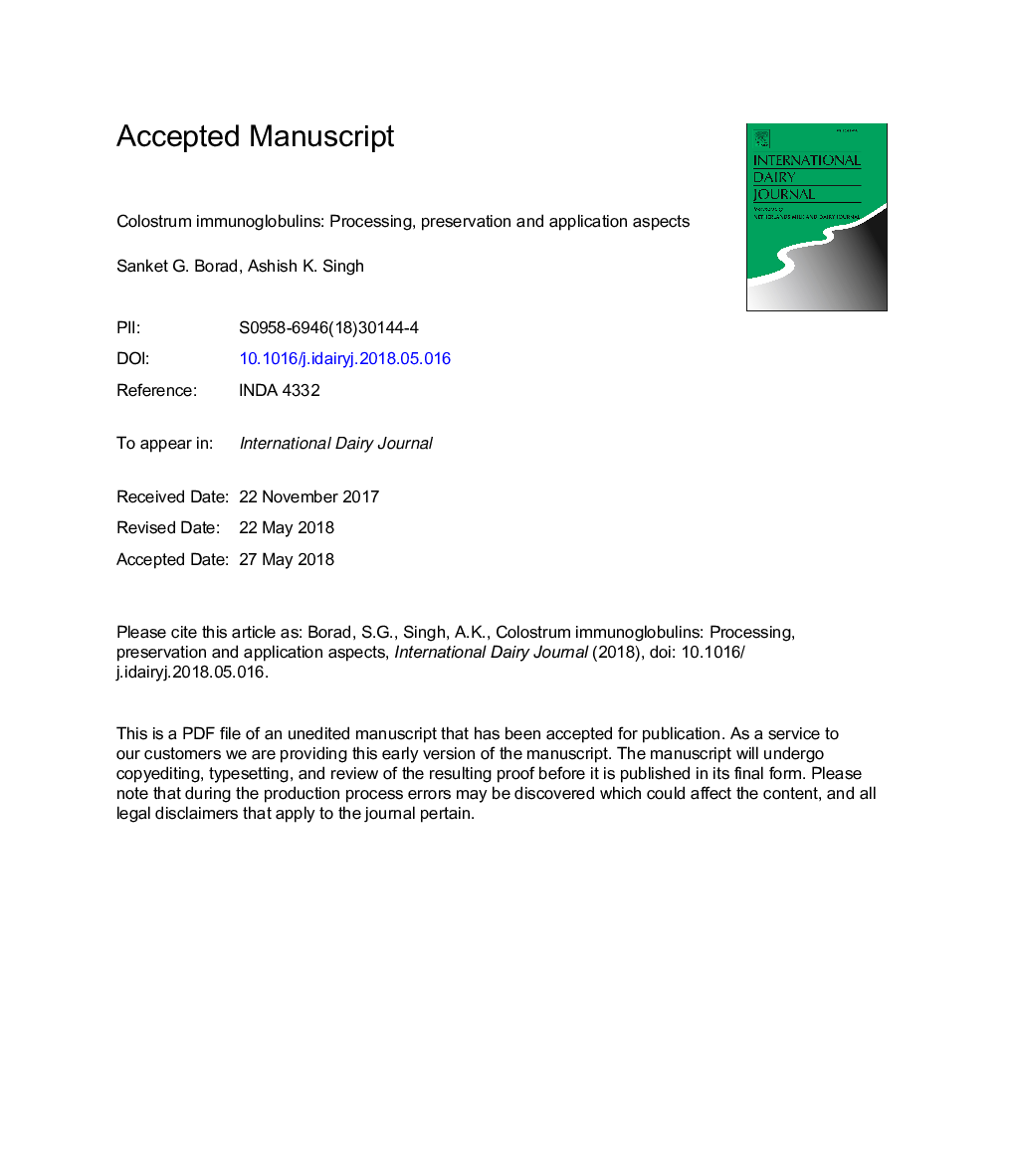| Article ID | Journal | Published Year | Pages | File Type |
|---|---|---|---|---|
| 8499671 | International Dairy Journal | 2018 | 46 Pages |
Abstract
Colostrum contains an abundance of immune components and can be exploited to address the poor immune status of developing countries' populations. The ability of colostrum immunoglobulins (Igs) to offer passive immunity to calves has been validated previously; the equivalent of only 7-10% of a calf's bodyweight of colostrum is required for passive immunisation. To transfer the immunotherapeutic properties of colostrum to the human being, the excess colostrum left over after feeding calves must be processed, preserved and utilised. Chemical preservatives cannot preserve colostrum satisfactorily; chilling and freezing are the most preferred methods. Freeze drying could retain a greater proportion of active Igs. Spray drying at controlled drying conditions can be adapted to retain a reasonably greater proportion of Igs. Among novel technologies, high pressure processing has been found to be a promising preservation method for the colostrum Igs. Membrane processing can be employed to manipulate the composition of formulations.
Related Topics
Life Sciences
Agricultural and Biological Sciences
Food Science
Authors
Sanket G. Borad, Ashish K. Singh,
